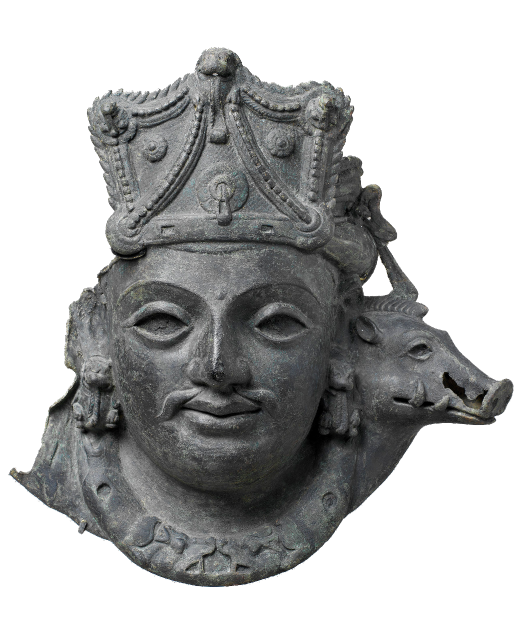ARTICLE
Geoffrey Bawa
Sri Lankan architect Geoffrey Bawa is considered a pioneer of Tropical Modernist architecture in South Asia, incorporating local materials and traditional forms into a Modernist sensibility. His climate-responsive building designs were also developed in close relationship with the local topography — often directly on site — and encouraged great permeability between the inside and outside.
Education and career
Bawa was born in Colombo in 1919, into a family with mixed Sri Lankan, British and Burgher ancestry. After a BA in English at the University of Cambridge, he studied law at the Middle Temple in London and became a barrister in 1944. He travelled extensively over the next four years, and returned to Sri Lanka in 1948.
In order to build a garden estate and second home at a rubber plantation he had bought — now known as Lunuganga — in 1951 he apprenticed under the architect HH Reid at the Colombo firm Edwards, Reid and Begg. He then enrolled at the Architectural Association, London, graduated in 1957, and became a member of the Royal Institute of British Architects. He returned to become a part-owner of Edwards, Reid and Begg, where he became acquainted with the architect Ulrik Plesner and the engineer K Poologasundram, both of whom he would frequently collaborate with later.
Political and economic instability in Sri Lanka during the 1970s led Bawa to undertake projects in India and parts of Southeast Asia through the Madras (now Chennai) branch of his firm, which he opened in 1971. He began to receive worldwide acclaim in the 1980s — also inspiring many imitations of his style — especially with the publication of Geoffrey Bawa (1986) by Brian Brace Taylor, the first monograph on an Asian architect, which became popularly known as the White Book. Most of his large-scale projects abroad were never executed, instead serving as grounds for ideas he could implement later; the vast majority of Bawa’s projects were built in his home country. After parting ways with Poologasundram and closing his firm in 1989, Bawa continued to work on new projects with a team of younger architects.
Residential projects
Bawa’s designs for private residences departed from the once-standard British colonial bungalow, typically a singular structure of brick and concrete with deep verandas and flat roofs located centrally within a garden. Adopting key features of traditional Sinhala manor houses, like his early contemporary Minnette de Silva, he reversed the approach, organising spaces around a central courtyard (meda midula), and using local materials like stone rubble walls, and terracotta barrel roof tiles on long pitched roofs. Besides encouraging interaction and movement between indoor and outdoor spaces, his designs actively incorporated the site’s topographical features, which, along with the materials used, created an organic relationship between the building and its environment. These solutions also served to reduce building costs and better utilise space in the context of decreasing land availability in the country.
Bawa’s first major commission, the ASH de Silva residence (1960) at Galle consists of a number of separate units spread across a sloping site, connecting to the central living space, courtyard and pool, while also provided with small gardens opening out onto the larger site. The Polontalawa Estate Bungalow (1967) at Nikaweratiya, which Bawa designed with Plesner, takes a similar decentralised approach, but creates further permeability between the natural and built spaces, incorporating the site’s large boulders as walls and roof supports, partly inspired by ancient Sri Lankan sites such as the Sigiriya fort and the Dambulla cave temple. Bawa’s acclaimed last project, the Jayawardene House (1998) in Mirissa, situated on a cliff overlooking the Weligama Bay, does away with walls almost entirely: the broad living area is open on three sides and covered by a wide, flat umbrella roof supported by slim steel rafters and columns, while the bedrooms are partially underground with glass windows allowing in slanted sunlight.
In contrast, the urban home of artist Ena de Silva (1962) in Colombo prioritises privacy, with living spaces arranged around, and opening onto, a central courtyard, rather than facing the outside. One of Bawa’s most celebrated designs, this house was later disassembled and reconstructed at Lunuganga by the Geoffrey Bawa Trust when de Silva sold her property in 2009. Barring a few that remain largely unaltered, most of Bawa’s residential projects have been demolished.
Institutional and commercial projects
Bawa’s concerns with the landscape and environment are seen at a larger scale in some of the hotels and institutions he designed. He designed Sri Lanka’s first resort, the Bentota Beach Hotel (1969), located on a small strip of land between the Bentota River and the Indian Ocean. The three-storeyed structure is covered by a series of long pitched roofs, with a pool in the centre; the rooms open out onto the river or ocean on one side, and the pool on the other. Local materials such as granite, stained wood and terracotta tiles are used.
In 1979 Bawa undertook the design for Sri Lanka’s new parliament building at Sri Jayawardenepura Kotte, with Poologasundram supervising the construction. The complex is built on an island at the centre of a marshland that Bawa had converted into an artificial lake. The central debate chamber is a large, tiered pavilion, surrounded by five smaller pavilions interspersed with courtyards. The liberal use of wooden rafters, windows and doors, the balconied portals, and the truncated pitched roofs are strongly reminiscent of Kandyan palace architecture, with the exception that copper rather than terracotta tiles is used for the roofs.
The Kandalama Hotel (now Heritance Kandalama) (1994) at Dambulla exemplifies Bawa’s inclination for designing spatial journeys through a combination of natural and built landscapes. It draws its guests along a deliberately winding route between rocks and vegetation — both around and within the building — culminating in a dramatic view of the Sigiriya cliff fortress across the Kandalama water reservoir from the open-air lobby. At Bawa’s insistence the original site was shifted away from the foot of Sigiriya, in order to offer such a vista of the cliffs while reducing tourist impact at the ancient fortress. The building has a long curved plan along a steep cliffside, and features vegetation growing on its walls and terraces, with vines often functioning as a natural screen. For its various innovations towards reducing its environmental impact, the hotel became the first project outside the US to be awarded the Leadership in Energy and Environmental Design (LEED) certification.
Among Bawa’s other well known projects are the Heritance Ahungalla (formerly Triton) Hotel, the Anantara Kalutara Resort, the Yahapath Endera Farm School, the University of Ruhuna, the State Mortgage Bank, and the Seema Malaka Buddhist temple. Throughout his career he continued developing his home Lunuganga as a garden estate and space for his architectural experiments and art collection. It is now maintained as a luxury hotel managed by the Geoffrey Bawa Trust.
Awards and legacy
Bawa received several accolades over the course of his career, including Sri Lanka’s second highest civilian honour Deshamanya, or ‘Pride of the Nation’, in 1993, and the Aga Khan Special Chairman’s Award for Architecture in 2001. His life and career have been the subject of several books, including Lunuganga (1990) by Christoph Bon and Dominic Sansoni, and Geoffrey Bawa: The Complete Works (2002) by David Robson; and the documentary The Genius of the Place (2023) by Sri Lankan filmmaker Afdhel Aziz. In 2024, a large retrospective exhibition of his work, Geoffrey Bawa: It is Essential to be There, was held at the Yale Architecture Gallery.
Bawa died in 2003.
Bibliography
Compston, Harriet. “The Captivating Story of One of Sri Lanka’s Great Architects.” The Telegraph, December 4, 2021. Accessed February 4, 2025. https://www.telegraph.co.uk/travel/destinations/asia/sri-lanka/captivating-story-one-sri-lankas-great-architects/.
Daswatte, Channa. “The Architecture of Hotels: The Legacy of Geoffrey Bawa.” In New Architecture and Urbanism: Development of Indian Traditions, edited by Deependra Prashad. Newcastle upon Tyne: Cambridge Scholars Publishing, 2010.
Geoffrey Bawa Trust. “Situating a Practice.” Accessed February 3, 2025. https://bawaexhibition.com/situating-a-practice.
Khanna, Jasreen Mayal. “Sri Lanka: Explore the Country through Geoffrey Bawa’s Iconic Designs.” Architectural Digest, July 23, 2019. Accessed February 4, 2025. https://www.architecturaldigest.in/content/sri-lanka-guide-best-geoffrey-bawa-work/.
Kunkel, Patrick. “Spotlight: Geoffrey Bawa.” ArchDaily, July 23, 2019. Accessed February 3, 2025. https://www.archdaily.com/770481/spotlight-geoffrey-bawa.
Robson, David. “Genius of the Place: The Buildings and Landscapes of Geoffrey Bawa.” In Modernity and Community: Architecture in the Islamic World, The Aga Khan Award for Architecture, Geneva. London: Thames & Hudson, 2001.
Robson, David. “Remembering Bawa.” thinkMATTER, October 24, 2014. Accessed February 4, 2025. https://thinkmatter.in/2014/10/24/remembering-bawa/.
Sennott, R. Stephen. Encyclopedia of Twentieth Century Architecture, Vol.1 (A–F). New York: Fitzroy Dearborn, 2004.






